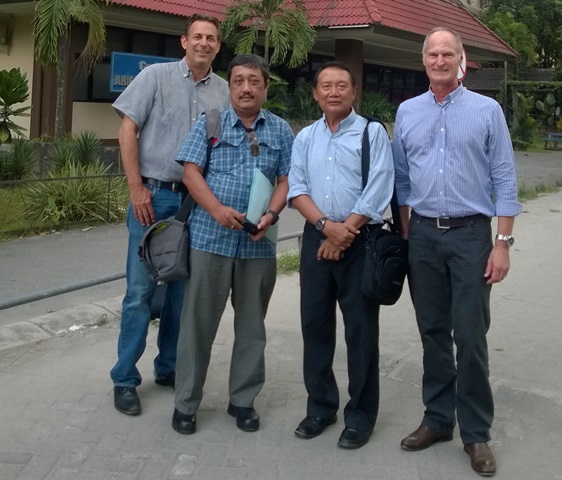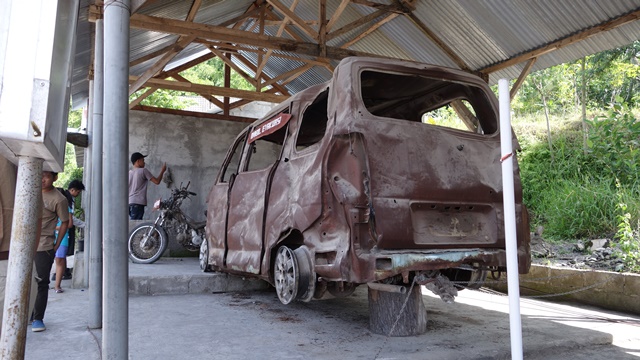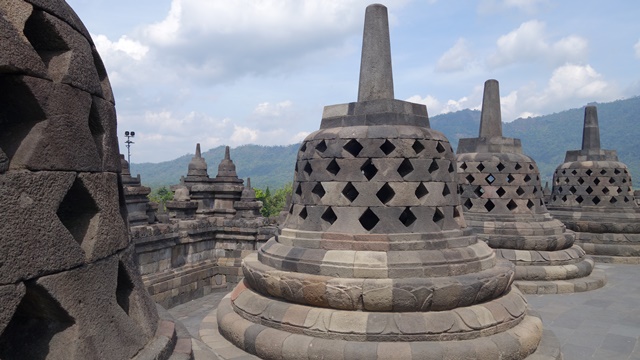Indonesia: Big Country, Big disasters
BANGKOK, 2 November 2010 (IRIN) - Concurrent disasters experienced in Indonesia in the week of 25 October - a volcano in central Java and an earthquake and tsunami off the southern coast of Sumatra - underscore the unique challenges this archipelago nation faces.
"Indonesia is a disaster-prone country and it's huge. Logistically there are many challenges when there is a disaster," Knarik Kamalyan, deputy head of office for the UN Office for the Coordination of Humanitarian Affairs (OCHA) in Jakarta, told IRIN on 2 November. With more than 17,000 islands and 30 percent of the country's roads unpaved, moving response teams and relief assistance to where they are needed can be difficult, Kamalyan said. "You might be able to get to the nearest air- or seaport, but then getting out to the affected area from there can be challenging if there are no roads or if the roads are flooded."
Those challenges were tested on 26 October when Mount Merapi, one of the country's most active volcanoes, erupted, following a tsunami triggered by an earthquake on the remote Mentawai Islands the night before, but 1,300km apart at opposite ends of the country. "It's been very difficult to get supplies in [to Mentawai] because there are so many small islands. We couldn't get there by boat and had [a] limited time-frame by air because of the poor weather," explained Sri Dewanto, a specialist with the Indonesian National Agency for Disaster Management (BDPB).
Logistical challenges with difficult weather conditions, limited access also makes obtaining an accurate picture of what is needed on the ground, and levels of displacement, not always possible. While weather, geography and poor infrastructure pose considerable challenges to relief distribution once they have arrived on the scene, the sheer distance that aid has to travel just to get there in the first place can be a challenge. "When a disaster happens the logistical supplies and relief aid are pushed out from Jakarta. It takes a long time," Dewanto said. "We have to get the army or the police to give us their helicopters. Sometimes it's difficult because you might be putting the pilot's life at risk."
If a disaster happens in remote Indonesia's western Papua Province, for example, relief assistance may have to travel up to 3,754km from Jakarta to Jayapura, the provincial capital - or almost the same distance between London and Baghdad. But Indonesian authorities are well aware of the problems and continue to take steps to bolster response efforts. On 1 November, the Indonesian House of Representatives approved US$16.8 million in extra funds for natural disaster emergency response for disbursement until the end of this year, local media reported. To improve relief coordination, the BDPB is planning logistical centres in six different regions throughout Indonesia to reduce the travel distance and improve response time.
Disaster-prone Indonesia, the world's fourth most populous country with 250 million people, is also one of the most disaster-prone, being located in the "Pacific Ring of Fire". According to Maplecroft's Natural Disaster Risk Index 2010, of 229 countries surveyed, Indonesia ranked second only to Bangladesh in terms of vulnerability. On average, more than one million people are affected by disasters annually, the UN World Health Organization's disaster database reported. In 2009 alone, Indonesia experienced 469 earthquakes with a magnitude of five or higher - more than any other nation, although most do not cause significant casualties.
Many experts say it is the continuous small-scale tragedies, such as flooding, which accounted for 40 percent of Indonesia's disasters over the past few years, that take the highest toll.







